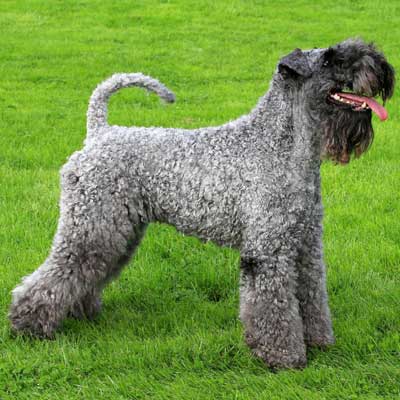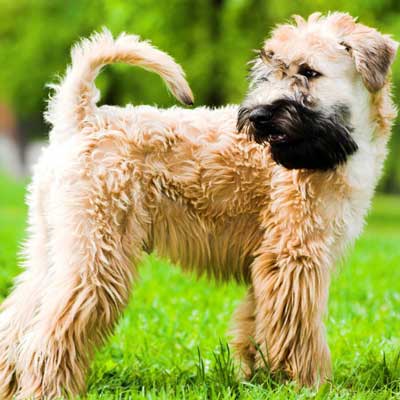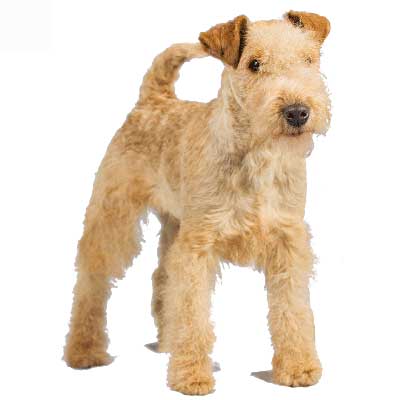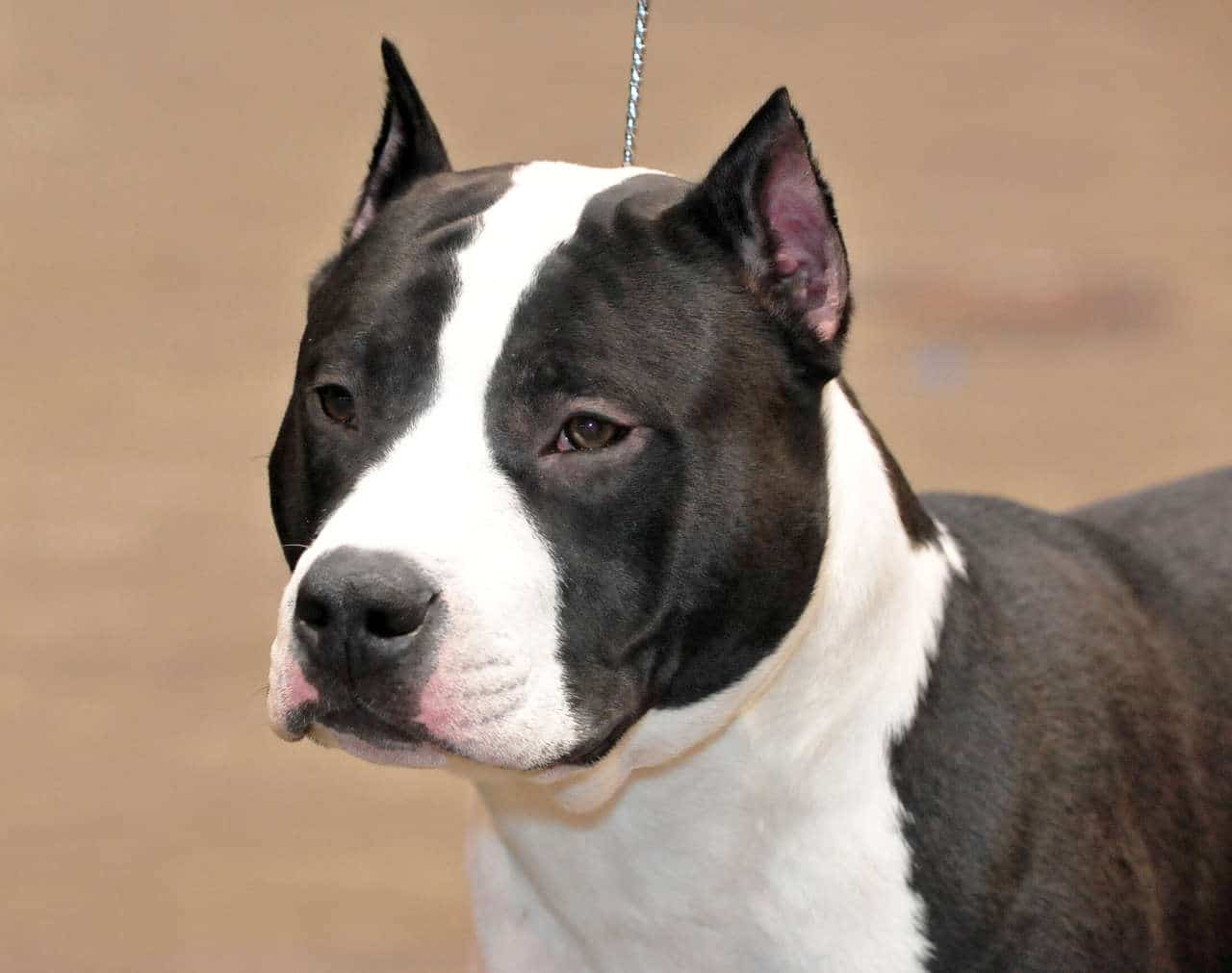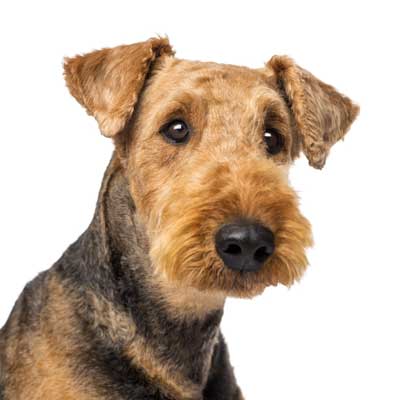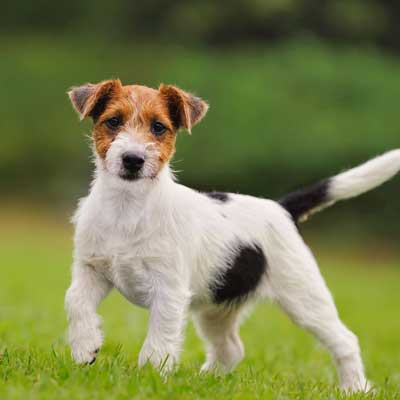Kerry Blue Terrier
Unbelievable hunter, loyal to his family
-
Head
Showing plenty of hair. Dogs should be stronger in head
and more muscular than bitches. -
Head - skull region
Skull: Strong and well balanced.
Stop: Slight. -
Head - facial region
Nose: Black, nostrils large and wide.
Muzzle: The foreface should be of medium length.
Teeth: Teeth large even and white, scissor bite (level bite acceptable).
Jaws: Jaws strong and muscular (punishing jaws).
Mouth: Gums and roof dark.
Eyes: Dark or dark hazel, medium in size and well placed, keen in
expression.
Ears: Thin and not large, carried in front or close to the sides of the head, in a forward position, again to express the keen, sharp terrier expression. -
Neck
Well proportioned, well set on shoulders and moderately
long. -
Body
Back: Medium length, level.
Loin: Moderate in length.
Chest: Deep and of moderate width. Ribs well sprung. -
Tail
Thin, well placed and carried erect and gaily. -
Forequarters
Shoulders: Fine, sloping, well-knit.
Forelegs: Straight in front, bone good.
Forefeet: Compact, pads strong and rounded, toe nails black. -
Hindquarters
Hindlegs well set under dog.
Thigh: Muscular, well developed.
Hocks: Strong. -
Feet
compact, pads strong and rounded, toe nails black. -
Gait / Movement
Good coordination, with legs parallel, forelegs reaching out and powerful drive in the hindquarters.
When the dog is moving the topline should remain level and the
head and tail should be carried high. -
Coat - hair
Soft, plentiful, and wavy -
Coat - colour
Blue of any shade with or without black points. Black is permissible only up to the age of 18 months, as is also a shade of tan. -
Size and weight
Height at the withers:
Dogs: 18 - 19,5 inches (45,5 to 49,5 cm).
Bitches: 17,5 -19 inches (44,5 to 48 cm).
Weight:
Dogs: 33 lbs to 40 lbs (15 to 18 kg).
Bitches: proportionately less. -
Faults
Any departure from the foregoing points should be considered a fault and the seriousness with which the fault should be regarded should be in exact proportion to its degree and its effect upon the health and welfare of the dog.
• Flesh coloured gums.
• Yellow or light coloured eyes.
• Roach back or hollow back.
• Narrow chest.
• Protruding elbows.
• Teeth undershot or overshot.
• White or bone coloured toe nails.
• Dewclaws on hind legs, or marks of their removal.
• Close, cow-hocked or stilted hind action.
• Dogs whose heads or tails are held up by exhibitors or handlers
should be penalised.
• Hard, wire or bristle coat.
• Any colour other than blue with the exception stated above

